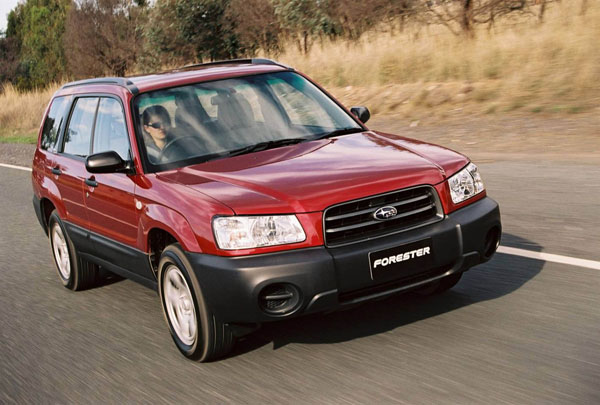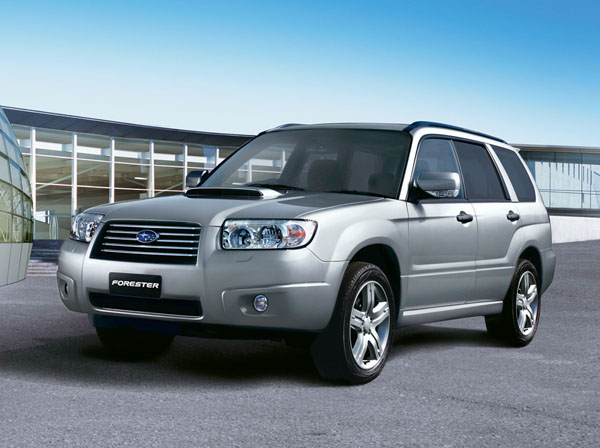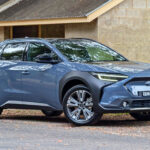When the Forester was introduced to Australia in 1997 it was closely related to the Subaru Impreza hatch. It also reminded Subaru lovers of the Subaru 4WD station wagons. Over the years the Forester morphed into a medium SUV in styling.
However, even as it entered the crossover era the Forester still had useful ground clearance so can tackle tougher than average conditions in the bush and on the beach.
Forester’s suspension has longer travel than Impreza’s and more rugged specs with semi-off-road tyres. The latter may have been replaced by normal car tyres at some time during the Forester’s life, so check for this if you’re considering doing some mild to medium off-road driving.
Early model Subaru Foresters, have relatively long overhangs front and rear, a legacy of being adapted from a car.
Good interior room is a real advantage of the squared-off styling. The front seats have plenty of legroom, width and headroom. The rear seat can take three people without too much of a hassle, though it’s better if they are children, rather than adults.
Entry and exit to the back seat is easy, partly because of the taller than average styling but chiefly because you don’t have to climb up into the seats as you do in an off-road 4WD.
There’s a good luggage area and practicality is further improved by the Forester having numerous storage areas throughout the vehicle.
Handling is reasonable for a vehicle in this class, but keep in mind the Forester is a crossover SUV, not a sports machine, so don’t hammer it too hard at bends. However, see the notes on the Forester GT (later tagged as the Forester XT).
Subaru Forester first reached Australia in August 1997 and was joined by the Forester GT in September 1998. The latter is a fun little hotshot powered by a slightly detuned Subaru WRX engine.
Forester GT was renamed Forester XT in the second-generation model in an attempt to fool the insurance companies into thinking it’s not a GT. The Forester GT and XT are performance off-roaders, though certainly not to the same extent as the WRX.
August 2003 saw the introduction of the second-generation Subaru Forester. It features a bit more style than the original series, particularly around the multi-faceted tail but, yet again, function takes preference over fashion. The latest version arrived here in 2008 and moved further towards an SUV shape in style.
Power for the standard Forester models comes from a 2.0-litre flat-four motor. Upmarket variants received a 2.5-litre motor from 2002 and that larger capacity was continued into all Foresters since then, with improvements in consumption and emissions introduced in several stages.
The extra capacity of the 2.5 goes into generating more torque rather than going for pure power – very much in the conservative way of thinking that’s so appealing to many Australian drivers.
Manual gearboxes are mated to a two-speed transfer case, but the automatic versions only have a single-range. Subaru considers the torque multiplication through the converter largely replaces the need for a low ratio on the auto.
Servicing and spare parts are generally reasonably priced though we have heard a few complaints about high prices on some less common parts.
Insurance premiums are generally moderate for the standard Foresters, but check on prices on the GT and XT, particularly if you’re classed as a young or inexperienced driver; insurance costs could break your bank account…
A good amateur mechanic should have no trouble doing most jobs. It’s always wise to have a workshop manual at your elbow before beginning work. Please leave the safety-related items to experts.
WHAT TO LOOK FOR
Older engines often have that typical flat-four ‘dak-dak’ beat when they get a lot of kilometres on them. If it seems too bad the engine may be approaching overhaul time. Newer ones are more refined, but it’s still wise to have them checked out.
Be wary of a Forester GT or XT that has too much turbo whine or excessive turbo lag.
On a turbocharged model, check the clutch isn’t slipping – this usually shows up on fast upchanges. Subaru makes the clutch a sacrificial component so that it fails first to protect other transmission parts.
Check underneath in case the Forester has been seriously used in off-road conditions. The front and rear bumper corners and their mountings are likely to be the first areas to suffer.
Scrutinise the door sills, the protection plates under mechanical components and the lower parts of the underbody for signs of damage.
Look at the condition of the seats, carpets and boot in case the Forester has been knocked about, particularly in off-road use.
Lots of sand in the carpet may mean it’s spent time on the beach. If you suspect this, taste for salt in the areas under the car.
Look over the complete body for signs of crash repairs. The easiest to spot are generally poorly matching paint colours and slight ripples in the panels.
HOW MUCH?
Expect to pay from $1500 to $3000 for a 1997 Subaru Forester GX; $4000 to $6500 for a 2002 GT; $6000 to $10,000 for a 2004 XT; $9000 to $14,000 for a 2006 XT Luxury; $13,000 to $18,000 for a 2009 XT; $17,000 to $24,000 for a 2010 XT Premium; $20,000 to $28,000 for a 2012 XT; and $28,000 to $37,000 for a 2014 2.5i-S.
CAR BUYING TIP
Hot versions of standard Subarus seem to lead a harder life than the their equivalent from other makers … be careful.














